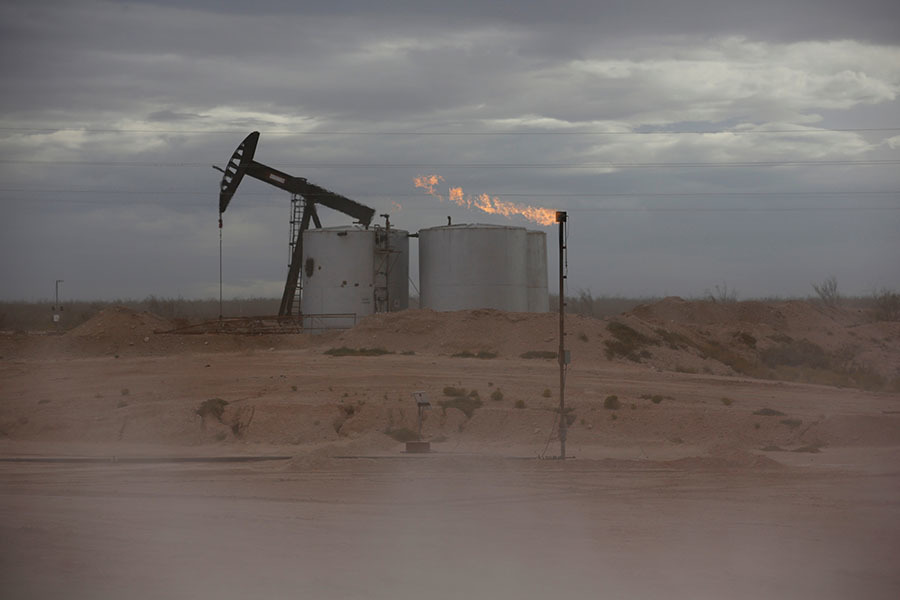In 2020, the volume of global investments in shale oil production will decrease by 52.5% compared to 2019 - from $ 140.8 to $ 66.9 billion, specialists from the Rystad Energy consulting company told RT in an interview.
As experts noted, a decline in investments in the oil shale industry was outlined back in 2019.
In particular, this is due to the fact that over the past few years, many companies in the industry have begun to work more efficiently and have begun to drill the planned number of wells at a lower cost.
As a result, the need for additional funding for a number of manufacturers has disappeared.
“If earlier the oil shale industry was viewed by investors as one big start-up and investments always exceeded the amount of income, now investors are demanding from the company to finance drilling activities solely from the income of the shale pipe itself,” explained Rystad Energy.
Meanwhile, investment outflow from the industry intensified significantly in the spring of 2020, when the impact of the COVID-19 pandemic and weakening global demand for hydrocarbons led to a record collapse in oil prices.
So, in April, for the first time in 21 years, quotations of the Brent benchmark fell below $ 16 per barrel, while the cost of raw materials of the American WTI grade fell to negative values and at the moment reached minus $ 37.6 per barrel, which had never happened before.
Although to date, oil prices have partially won back the losses in the spring, the production of shale raw materials remains unprofitable for producers.
Anna Bodrova, a senior analyst at the Alpari information and analytical center, spoke about this in an interview with RT.
“The average cost of shale oil production is $ 50-60 per barrel, that is, raw materials on the market must cost more than this level for production to be profitable.
And today on the exchange, oil is traded near $ 40 per barrel.
With such input, it becomes clear why the number of oil rigs in the United States in shale deposits is consistently decreasing, ”Bodrova explained.
Reuters
© Christian Hartmann
At the moment, the United States remains the largest producer of shale raw materials in the world.
At the same time, against the background of the situation with the pandemic since the beginning of 2020, the number of active oil rigs in the States has decreased almost four times and reached 189 in early October, according to Baker Hughes.
The sharp decline in drilling activity has become one of the main reasons for the decline in the investment attractiveness of the shale sector.
This point of view in a conversation with RT was expressed by the head of the analytical department of AMarkets Artyom Deev.
“Investors are guided by the number of producing wells in the US as an indicator of the state of the country's entire oil sector.
Moreover, shale oil has become one of the factors that affects prices - the more oil is produced in the United States, the more competition in the market and price fluctuations, ”Deev explained.
Against the backdrop of the downtime of enterprises, many shale producers had nothing to pay off their loans, which provoked a wave of bankruptcies in the industry.
This is evidenced by the materials of Haynes & Boone.
Thus, in the first three quarters of 2020, 36 energy companies went bankrupt in North America.
Their total debt amounted to almost $ 51 billion. Of this amount, $ 27.5 billion fell on unsecured loans.
By the end of 2020, the number of ruined producers of raw materials is expected to only increase.
“In the absence of any hope of improving economic conditions for US oil companies in the near future, there is reason to expect that a significant number of companies will continue to resort to bankruptcy as an instrument of protection from creditors by the end of this year,” Haynes & Boone said.
Reuters
© Angus Mordant
According to Rystad Energy, as a result of the shutdown of a large number of wells in May, oil production in the United States fell from 12.9 million to 10 million barrels per day.
In the second half of the summer, the indicator managed to recover to 11.2-11.3 million, but in the near future it may resume the decline, experts say.
“The current level of rig activity remains below the level required to maintain stable production.
Therefore, most likely, production will stabilize at the level of 10.6-10.7 million barrels per day by the middle of next year at a WTI oil price of $ 40 per barrel, ”Rystad Energy noted.
According to Aleksey Kiriyenko, the weakening of the American shale industry is constrained by low interest rates in the United States and the availability of financial support from the country's government.
As the expert explained, such conditions make it possible to smooth out the problems of the industry, but at the same time the companies continue to operate at a loss.
“A similar situation could be observed earlier in the Japanese banking system, where decades of low rates created a whole culture of“ zombie banks ”that operated without profit, but with huge non-core asset balances.
Regarding the extractive industries in the United States, you need to be prepared for years of near-zero profits and attempts to merge small companies in an attempt to reduce the costs of both production and debt service, ”concluded Kiriyenko.

